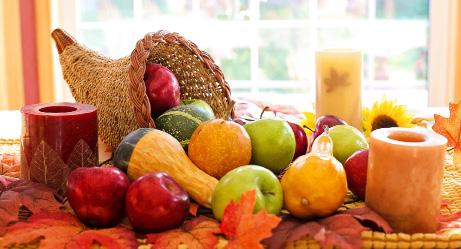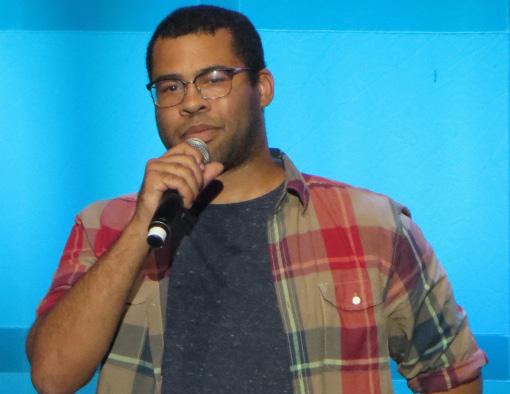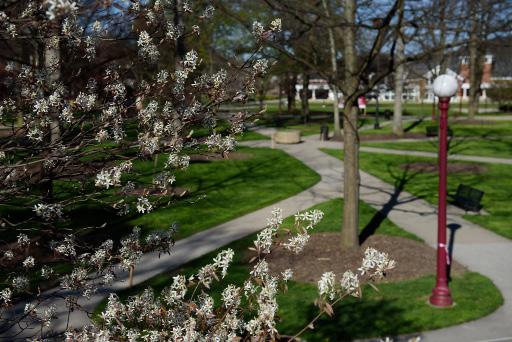
25 minute read
CULTURE
Culture Editor: Katelin Pompa – xzgw@iup.edu Lead Culture Writer: Haley Brown – tbfx@iup.edu
(IUP Lively Arts/Facebook)
Advertisement
The performances were held Friday and Sunday beginning at 7 p.m.
The Dance Theatre presents Poe on Friday the 13th
HALEY BROWN Lead Culture Writer tbfx@iup.edu @ThePennIUP

On Friday the IUP Dance Theatre presented “The Phantasmagoria of Edgar Allan Poe.”
The show was both directed and choreographed by Holly Boda-Sutton, and the dancers in the show were all IUP students. The music was originally composed by David Martynuik, and the orchestra during the performance featured IUP music faculty members.
The show was composed using some of Poe’s poems and short stories as inspiration for the music and choreography. It was meant to explore the life and unexplained demise of one of America’s greatest poets and writers.
The dance theatre began the show with a few screens about information concerning Poe’s mysterious death and how it served as some of the main inspiration for this performance.
The first dance began with Chris Singer who represented Poe. The backdrop changed according to each number and was a sketched scene to represent the setting of each story or poem. (Wikimedia)
The second number, titled “Cortege of the Grotesque and Arabesque, Overture of Characters,” began with the Poe character entering the performance space through a side door and flipping open a book. As he whipped out a feather pen and began to write in his book, the characters appeared onstage and flowed along with the music.
As each dancer flitted on and off the stage, it became apparent that they would each have their number in Poe’s “life” on the stage as the show progressed. The dancers were all in dark costumes, and the music took on a mysterious and menacing tone as Poe continued to scribble. At the end of the number, he set his writing book down and fled the stage.
The number titled “Pas de Deux of Annabel Lee and Poe” came next with Poe dancing, Paige McLaughlin as Lee. During this number, Poe and Lee waltzed across the stage along with the music-box-like song, and at the end of the pas de deux, Poe laid Lee on the stage as if he was laying her to rest.
The following number was titled “Tell-Tale Heart Tango” and featured a young man (the murderer), danced by Amanda Valinotti, an old man (the victim) danced by Bricelyn Webber, and two inspectors, danced by Gabriella Harley and Danielle McCormick. During the number the dancers acted out Poe’s famous story of the “Telltale Heart” through dance.
When the inspectors entered the stage, the “killer” was tormented by guilt and driven to confession by the pressure, as the storyline goes. The inspector dancers were in sync with one another.
The following number was titled “Bon-Bon” with the Bon-Bon character danced by Sierra Cramer, and the Devil character performed by Amy Kukula. During this number, inspired by Poe’s comedic short story of the same name, the checkered-vested Bon-Bon, believing himself to be a great philosopher, pranced about. Since this short story focused on the verbal exchanges between the Devil and Bon-Bon, but the dancers made it easy for the audience to comprehend.
The next number was inspired by “Fall of the House of Usher.” The characters were a brother danced by Brianna Adkins, a sister danced by Danielle McCormick, and a traveler who was danced by Sierra Cramer. The lights came up on the characters of the traveler, and the brother stood while the sister laid onstage, and he soon began banging on what was presumably her coffin lid. They did not have a coffin for a prop on stage
The following number was titled “Black Cat/Lenore/Sleeper Pastiche.” The characters involved were Black Cat #1 danced by Rachel Kovach, Husband danced by Charles Arterbury, and Wife danced by Brooke Ippolito. In this number, there were also dancers for Lenore who was portrayed by Madison Bauman, Black Cat #2 danced by McLaughlin, and Sleeper danced by Henshaw.
“Nevermore Pas de Deux” came next with Poe’s character once again portrayed by Singer, and the Raven character danced by Bauman. During this number, the Raven entered first wearing all black and a feathered mask as Poe approached from the other side of the stage.
It appeared as if they were battling one another. They circled each other gracefully, facing off in front of a backdrop resembling a sketched scene of a cemetery.
The next number was inspired by “Masque of the Red Death,” and had Singer, Death was danced by Gabriella Harley, and eight other dancers played characters called “Accusers” also shared the stage. The backdrop for this number was a mansion where the dancers participated in the festivities until Death showed up to crash the party, and the accusers were slowly killed by the plague character.
The show was ended with a quote from Poe’s “The Raven,” and the final bow was taken by the company of dancers.
After the final company bow, a slide show of the professors involved in the music ensemble scrolled on the screen along with a short biography about each of them.

12 November 18, 2020 Culture STATIC brings AJR to your living room

AJR writes, produces and mixes their music in their living room. (Haley Brown/The Penn)


HALEY BROWN Lead Culture Writer tbfx@iup.edu @ThePennIUP

The Student Activity Committee (STATIC) hosted a virtual concert Thursday featuring the winners of IUP’s Conquer the Mic competition, The Placeholders and AJR.
The concert lasted from 8 to about 10 p.m. with a short question and answer (Q&A) portion with AJR at the end of the night. The event was held virtually on Zoom and was free for the IUP community.
There was no preregistration required, and questions for the Q&A portion were accepted from the audience in the Zoom chat, STATIC’s Instagram, Twitter and Facebook’s direct messaging and through email.
The concert began with The Placeholders playing a handful of their songs to warm up the audience and open for AJR’s performance. The Placeholders earned the opening place by winning IUP’s Conquer the Mic event Nov. 6.
The winner of Conquer the Mic was determined by audience votes. The Placeholders is made up of Noah Saylor (communications media), Jesse Brown (student affairs in higher education), Jon Biller (information systems) and Luke Miller (geography.)
Saylor provided the vocals and played guitar, Brown played lead guitar, Biller played bass and Miller provided percussion, and their performance was filmed by Eyan Szazko.
AJR is an American indie pop trio with multi-instrumentalist brothers Adam, Jack and Ryan Metzger.
They played the majority of their mainstream songs including “Burn the House Down,” “100 Bad (Haley Brown/The Penn)
Days,” “Weak” and “Sober Up.” They also played some fan-favorites like “Don’t Throw Out My Legos,” “Three-Thirty,” “Dear Winter” and “Karma.”
The audience, judging by the Zoom group chat, was inarguably excited. Though the fans watching were obviously dissappointed that the event couldn’t take place in-person, everyone was pumped nonetheless to share a night of music.
There was a portion in the middle of the concert where AJR decided to give their audience a small look into their creation process. Jack played around on his launchpad to explore different possible sounds for the song they were demonstrating while Ryan guided him by narrating the process.
This part mirrored the weekly “breakdown” live streams Ryan used to do where he explained the band’s creation process in-depth for the fans. The experimentation portion of the concert led seamlessly into one of AJR’s most popular songs, “Burn the House Down.”
The event was finished with a short Q&A section with the three Metzger brothers. STATIC moderators asked fan-submitted questions and audience questions which ranged from “What their lyric writing process consisted of,” to “Why they make certain wardrobe choices onstage,” namely Jack’s iconic rabbit-skin hat.
Jack answered many of the questions with Ryan filling in the blanks, and the ever-quiet Adam keeping mostly mum.
Though the night would have been even better if it could have been in person, the opportunity to enjoy a concert during the pandemic was an incredibly appreciated one.

(RJA1988/Pixabay) Crazy Horse was an Native American Oglala Lakota chief most known for the “Battle of Little Bighorn.” His monument is in South Dakota.
Thanksgiving through the eyes of Native community

Ignorance is not always bliss, as it can stop real voices from being heard.
Thanksgiving was taught to many in elementary school as the story of pilgrims and Native Americans uniting and working together. They ate together and became friends.
However, as many grew older, the true story was revealed, which included more colonization and death. This does not stop most from their celebrations, however, because the holiday is still a day of union to them.
Native Americans and those of indigenous ancestry disagree on this outlook.
In a Time article about the Native American perspective on Thanksgiving, Sean Sherman said that even predominantly indigenous schools taught the holiday the way that other schools taught it.
“It represented a time when ‘pilgrims and Indians’ celebrated (Timeship/Pixabay) together, and it was about being thankful,” he said. “Only later would we find out that it was a lie.”
When Sherman had first learned the truth about Thanksgiving, he said he had felt bitter about the holiday.
Now, however, he said he had a new sense of how it should be celebrated. He said he understood why other Native Americans protested it but felt there was a way to keep the holiday without the false narratives.
“We can focus simply on values that apply to everybody: togetherness, generosity and gratitude.”
Similarly, Jo Ironshield told KWQC in Iowa that she was taught the romanticized version of Thanksgiving.
“I don’t understand why our culture is not being taught,” she said. “Why is our truth not being taught in schools? I don’t understand why there are no history books really for kids at that age.”
To stop them from being ignorant on the subject, Ironshield told her children and grandchildren the true story of Thanksgiving and what it meant for their ancestry.
Unlike Sherman, she said she still had a distaste for the holiday, but she knew not everyone would quit celebrating. Instead, Ironshield wanted people to be more aware. “At least take the time out to really think about what happened on Thanksgiving Day,” she said.
For Ironshield, remembering the history would help keep from disregarding indigenous people and their struggles.
With these perspectives in mind, there are multiple ways that one can continue to celebrate Thanksgiving without forgetting what happened.
An article written for Cultural Survival, they gave nine tips to help keep from continuing with stereotypes Americans are taught from a young age.
One of these ways was through food.
At Thanksgiving, most families may eat stuffing and mashed potatoes. Those are not the foods that were really eaten at that time.
Sherman mentioned the importance of food in his article, too, and he gave examples of what Native Americans ate.
“Most of our Thanksgiving recipes are made with indigenous foods: turkey, corn, beans, pumpkins, maple, wild rice and the like,” he said. “We should embrace this.”
The Cultural Survival article pushes for an end in misrepresentations and cruel stereotypes in media.
Though this can not be done overnight, the article recommends that people start listening to indigenous musicians and take in media that was created by Native Americans to get a true outlook.
“Native people were silenced, and their stories were marginalized. That’s why it’s especially important to read stories about Native characters, told in Native voices. “
The full article can be found at https://www.culturalsurvival.org/ news/9-ways-decolonize-and-honor-native-peoples-thanksgiving.
November is also Native American Heritage Month. Use these tips not only to decolonize Thanksgiving, but to celebrate the importance of indigenous people.
Thanksgiving is a day of mourning and remembrance for people of Native American ancestry, but that does not mean there cannot be celebrations.
Keeping the actual history in mind and respecting the culture of Natives can help stop the lies spread through the education system and can keep indigenous people from being silenced again.


The Health Center hides QR codes
AMARI WALKER Contributing Writer jqtbc@iup.edu @ThePennIUP
The heathy tips QR scavenger hunt continues all over campus as part of the Health and Wellness Promotion as well as other events to help students during these trying times.
There’s a total of 32 QR codes that have been posted in various locations on campus. The first 16 codes were posted in October, and another 16 have been posted this month. Each of them provides information on how to stay healthy during quarantine.
If you make it through all the clues and scan the codes, you will be rewarded with prizes each month.
The first code was posted on IUP’s Health and Wellness Promotion’s Instagram page, @IUPAWARE.
If you’re just hearing about this, here’s your first clue: “Go outside of where you’d get your flu shot on campus.”
You’re not too late to join the fun as all the clues are still around campus. Once you start at this clue, there will be more information on where to find the next one. Also, make sure you look at the benches.
If you’re looking for some stress relief, then you can go to room G60 in Suites on Maple East to meet the therapy dogs. Ranger is a beagle-mix that comes Mondays, Wednesdays and Thursdays. Bam-Bam is a golden retriever that comes in Tuesdays from 2 to 4 p.m. Sapphire is an Australian Shepherd that comes Mondays from 4:30 to 6:30pm.
Students can register at https://iupranger.setmore.com/.
If you need to relax between classes, there are Meditation Mondays held from 1 to 1:15 p.m. via Zoom. If you want to join, be sure to check for the link on Instagram and Twitter, @IUPAWARE and @IUPRanger1.
For anyone who is competitive or just wants to have fun, you may enjoy Kahoot Trivia Night Thursdays via Zoom. Between 7 and 8:30 p.m., you can win a prize by joining via Zoom (OpenClipart-Vectors/Pixabay)


using the link posted on their Instagram and Twitter.
If you’re looking for more food options to make while staying at home or on campus, they also post Fresh Food Fridays on their Instagram pages. Each week is a new recipe demonstrating ways students can eat healthy. In the caption, you will see the ingredients that you will need listed along with how long it will take to cook and how to cook it.
Of course, you can always add your own ingredients to the recipe as well to meet your standards. These are quick and easy recipes that you can make and enjoy by yourself or with friends and family.
If you have wanted something to do besides homework and working, make sure you check all of the Health and Wellness Promotions’ social media pages to stay up to date about upcoming events that may help you take that big, deep breath of relief.
With everything going on, please make sure you are wearing your masks around others and when you go out to public places. If you want to know more ways you can stay safe, there are also weekly posts every Wednesday.
To find more information on the Health and Wellness center and the events they present, check the IUP central calendar.
Piece of the Pie What do students like to eat for dessert after a Thanksgiving meal?

(JillWellington/Pixabay) This year’s Thanksgiving will look a little different due to social distancing guidelines.
An age-old argument rears its gnarled head once more as we progress through fall:
What’s the best Thanksgiving dessert?
Pumpkin-based concoctions are usually the first to come to mind in this debate. And sure enough, many IUP students ride the pumpkin train every year.
Gina Biancarelli (senior, nursing) and Jordann Noel (junior, special education) prefer the staple pumpkin pie.
“It’s simply classic,” Biancarelli said.
This dessert consists of a thick, spiced, pumpkin custard baked in a pie shell. The traditional pumpkin pie spices are cinnamon, nutmeg, ginger, clove and sometimes allspice.
“I love the texture, and you can add all the whipped cream you want,” Noel said.
Another fairly common pumpkin confection is the pumpkin roll.
“[It’s] just a staple dessert,” Elizabeth Stash (sophomore, athletic training) said. “It’s literally something I look forward to every year.”
A twist on the Swiss roll, pumpkin rolls are thin, light cakes that are rolled into logs with a filling, usually cream cheese frosting. Swiss rolls (also known by about a million other names) can be a bit daunting to make because of their tendency to crack during the roll, but a good way to combat the dreaded crevasses is to be sure you don’t overcook the cake.
Despite the notoriety, many bakers love to make pumpkin rolls every year.
“It’s just so creamy and soft,” Kayla Johnson (senior, hospitality management) said. “It’s also super fun to make.”
In recent years, however, home cooks have gotten more avant-garde in their pumpkin presentation.
“My mom makes us each an individual dessert for Thanksgiving every year, and I always choose pumpkin cheesecake,” Brooke Cassidy (senior, psychology and anthropology) said.
The other most popular fruit (pumpkin’s a fruit, right?) dessert is the American classic, apple pie.
Alec Petrosky (senior, geography) and Emily Dulion (graduate student, criminology) swear by the traditionally double-crusted delicacy. Generally speaking, crisp, sour apples are diced, tossed in a mixture of sugar, cinnamon and nutmeg, and baked between two flaky crusts.
“My mom makes it from scratch every year,” Dulion said.
Apple pies are also a good substitute for those who don’t like the orange gourd.
“I never liked pumpkin, and fruit pies are the best kind of pies,” Petrosky said.
Though pumpkin and apple are the reigning champions of Thanksgiving, there’s more than enough room on the table for other desserts.
Dakira Jones (junior, nursing) is a fan of sweet potato pie.
“[It’s] way better than pumpkin,” Jones said.
Kimberly Rodemaker (junior, speech and language pathology) loves cranberry salad, and Josh Olarsch (senior, music education) swears allegiance to chocolate bourbon pecan pie.
“It has a great contrasting taste of bitter and sweet,” Olarsch said.
Whatever your taste, there’s surely a Thanksgiving dessert for you. Even if you’re staying at school this year to limit exposure to friends and family, quite a few desserts are fairly simple to make, even if you’ve never baked once in your life.
Pre-made pie crusts are a godsend. Almost every grocery store will have all the ingredients you need to make a serviceable dessert – usually all right next to each other – and if all else fails, store-bought pies and cakes are pretty good.
Stay safe, follow CDC guidelines, and above all, treat yourself this Thanksgiving.

16 November 18, 2020 Culture Horror creators are changing the game

(Wikimedia) Jordan Peele (left) produced films featuring a predominately Black cast to touch on important issues. Lupita Nyong’o (right) is talking about her role in ‘Us’ during an interview.

RACHEL FOOR Staff Writer R.G.Foor@iup.edu @ThePennIUP

Black storytellers are changing the horror film genre by addressing racial tensions and trauma still prevalent in American society.
Jordan Peele, the critically acclaimed director of films such as “Get Out” and “Us,” ushered in this new era of Black creatives telling their story through film, television and writing.
“It’s apparent that racism is still a huge problem in the world today,” Joseph Crissman (junior, communications media) said. “With the rise of Black horror storytelling, people of color such as Jordan Peele can make films illustrating what it is like to be a person of color, dealing with the horrors of racism.”
In many stories by Black creators, the “villain” is often racism. In “Get Out,” this manifests itself when the main character, played by Daniel Kaluuya, visits his girlfriend’s rich white family for a weekend. While there, Kaluuya’s character unearths a disturbing secret about the family.
“When we think of horror, we think of jump scares, blood, and the occasional demon or crazy psychotic murder,” Crissman said. “What ‘Get Out’ does that sets itself apart is the major villain/horror is just some rich white people. As the audience, we get pulled into this lie that the main character’s girlfriend is good from what happens when they get pulled over by the police during the beginning stages during the movie.”
He said it completely blows your expectations away, especially if you’re not a person of color.
The success of “Get Out” certainly paved the way for other Black stories to be accepted into the mainstream media. The film made a net profit of $124.8 million, was chosen as one of the top 10 films of 2017 and won Peele an Oscar for Best Original Screenplay.
Peele’s second film, “Us,” was also largely successful. It starred Lupita Nyong’o of “12 Years a Slave” and addressed systemic oppression and the guilt of privilege.
“Both ‘Get Out’ and ‘Us’ take your expectations and throws them in the trash with twists you never saw coming,” Crissman said. “Most horror movies nowadays rely on effects and costuming to scare you or leave you in suspense, but ‘Get Out’ and ‘Us’ do it with fantastic writing and directing by Jordan Peele.”
Another Black storyteller, writer and producer Misha Green, who produced the HBO series “Lovecraft Country” alongside Peele in which a young Black man travels across the Jim Crow South looking for his missing father.
Along the way, he learns dark secrets about a town on which famous horror writer H. P. Lovecraft supposedly based the location of many of his fictional tales. The show features Black main characters, including actors Jurnee Smollet, Jonathan Majors and Aunjanue Ellis.
“They’re talented,” Jeremy Waltman, a professor in the communications media department, said. “We’ll have to wait and see how the current wave of films affects the genre. Horror is broad and can allow for comment on society without taking the viewer out of the movie.”
Black storytellers are not going anywhere anytime soon, nor would we want them to. Peele has several highly anticipated projects in the works, including a remake of the 1992 supernatural horror film “Candyman” that follows a graduate student in Chicago who uncovers the legend of the Candyman, the ghost of an artist and son of a slave that was murdered in the late 19th century for his relationship with a white painter’s daughter. (Wikimedia)

Culture
Lost ‘Turkey Day’ family traditions
The Holiday’s may be adopting some new traditions this year, but there are many old ones that we’ve forgotten about over the years.
Thanksgiving is one of the holidays where mostly everyone participates in the same things. However, there are some traditions that have been forgotten over the years, and they are listed below.

Retelling the story of the first Thanksgiving
Although we learned about the first Thanksgiving in elementary school, it’s important to brush up on all the facts. Whether it be from a history book or a TV documentary. It’s important to know the origin as to why we celebrate this day even hundreds of years later.
Using place cards
Believe it or not, many people in the past used to make festive place cards with every guest’s name on it which was placed at their seat. This small gesture helped guests feel extra special at the meal since it is a family-centered dinner that brings togetherness.
Splitting the wishbone
Although it’s a superstition, that’s what makes it fun. This is especially fun for younger guests to make a wish on the holiday.
Two people hold their own end of the wishbone of the turkey, make a wish, and the person holding the longer piece was said to have good fortune or their wish granted. This tradition comes from the Romans. It was also believed that birds could bring good luck and are very powerful.
Passing down family recipes
Sure, it’s nice to have all the delicious traditional foods each year, but why not try something new? Traditions are made from trying new things, right? Thanksgiving is the perfect time to break out an old recipe and cook it with family.
Taking an annual Thanksgiving walk
In the past, many families would walk in the morning or right after they eat in order to walk off some of those Thanksgiving pounds. It’s important to enjoy the fresh air and the beauty of fall before winter finally appears.
Reflecting on the year
2020 sure has been an unusual year. Take this time to go around the table and talk about how we’ve grown from start to finish. Even though this year is hard to find something to be thankful for, we can all talk about how it’s forced us to grow from a comfort zone.
Playing your own Turkey Bowl rather than watching it
Thanksgiving is a huge day for football lovers. Yet, very rarely do people take part in their own football game on Thanksgiving morning. This is a tradition that helps us bring joy to the holiday along with much needed physical activity.
Start binge watching a new show
Not often do we have time to slow down and take some time with family. Kick off your holiday season early by binge watching Christmas movies or TV shows to get you in the spirit for the upcoming month ahead. This is a great way to bond with family and to unwind.
As you can see there are many Thanksgiving traditions that have been lost in the shuffle over the years.
This year hasn’t been easy on any of us, but it’s an important time to say what we’re thankful for and focus on the things that haven’t changed: the ability to bring back or start a new tradition
(The Penn Archives)
Students upset by new spring break changes

MEGAN DONNY Staff Writer M.Donny@iup.edu @ThePennIUP

Students discuss changes to spring break
Students received an email Nov. 10 with announcements about changes to the spring semester, including the dates of our spring break.
It had been previously announced that the break would no longer be one week, but seven separate “self-care” days.
These days are Feb. 25-26, March 13-14, April 5-6 and April 21. Two of these are weekend days.
Students’ initial reactions to the changes to the break were negative. Many students usually take destination trips or travel home to see family.
With these recent changes, students now have to alter or change the plans they might have previously planned.
“I’m not necessarily happy with the change to the spring break,” Maran Davis (senior, fashion merchandising) said. “I feel that spring break is a week that everyone looks forward to during the semester as a way to unwind and to do something fun.”
While non-class days are nice, it doesn’t decrease the amount of work students will most likely have to do. Usually, spring break gives students the opportunity to have an extended period of time off from assignments or to get a head start on classwork for the rest of the semester.
“I don’t think we needed to change the break,” Aaron Hoda (senior, criminology) said. “It’s what worked best for all of the students.”
When the dates were released, many students immediately noticed the fact that they gave us two weekend days off: Saturday, March 13 and Sunday, March 14.
“I think that they gave us seven days to kind of make up for the fact that they are cutting our spring break and trying to also make the students and faculty happy,” Davis said.
Some students took to social media to express their disinterest about the break and even went as far as to repost memes about it.
“It’s not really time off, but it will allow us to take a small break from the constant work and Zoom classes,” she said.
One good thing about the selected days is that IUP did give us two long weekends in February and April. While it might not be as beneficial as seven days in a row, it still gives students the opportunity to plan a small trip home or a short vacation.
“I personally don’t have any plans, but I think students will still try and fit some plans in during these short breaks,” she said.
Davis also said that she thinks there isn’t much time to even make plans due to the shortness of these small breaks. She said that it would be possible to take a day trip but not much else.
Other students will most likely use these days to do schoolwork.
“I’m probably going to catch up on homework or try to get ahead of upcoming assignments,” Hoda said. “I don’t think the days selected for days off are fair to students who may need that spring break time off.”
With the pandemic continuing to trouble our society, it’s also important to note that no matter what you plan to do for spring break, don’t forget to practice social distancing.


